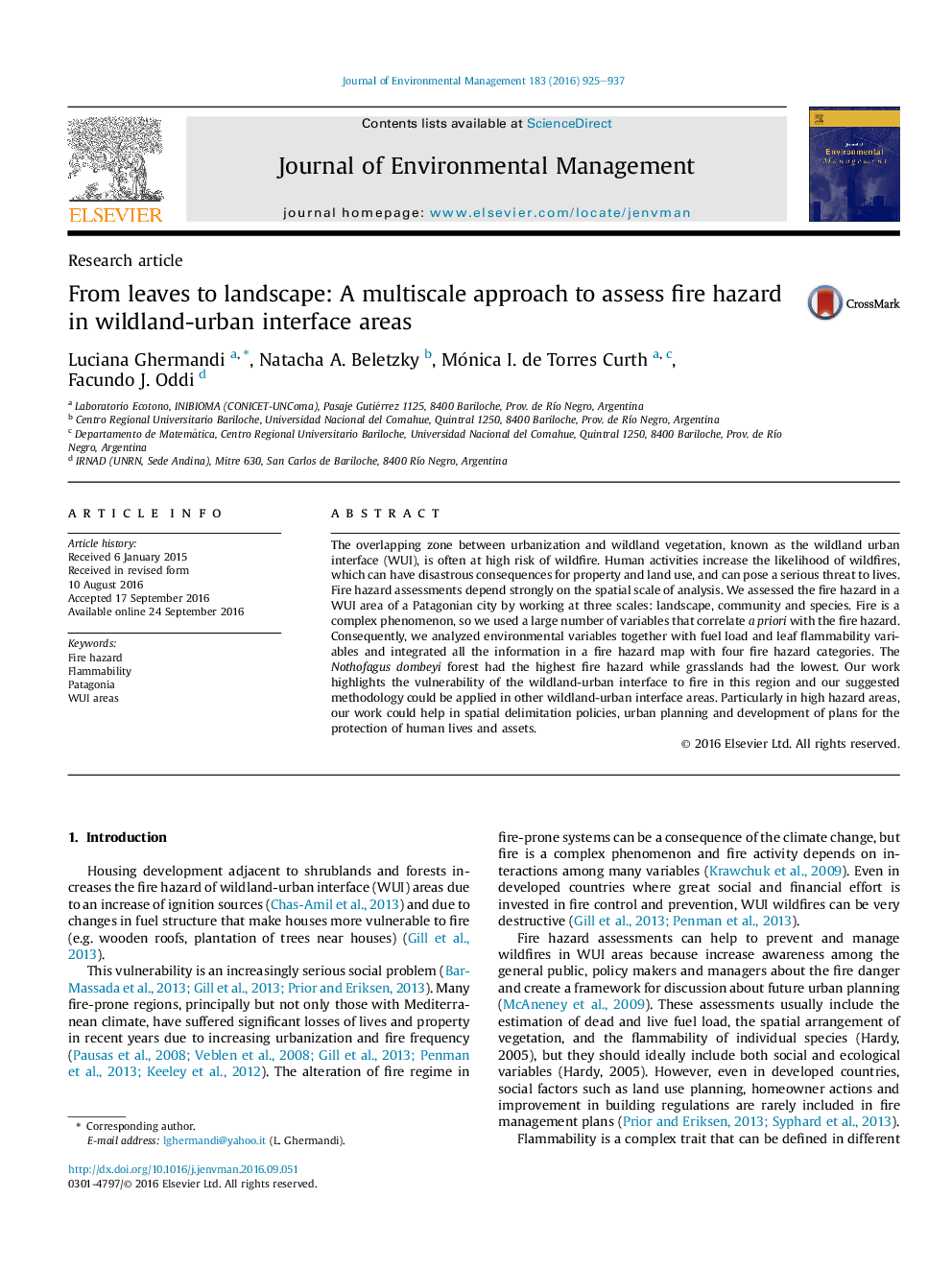| Article ID | Journal | Published Year | Pages | File Type |
|---|---|---|---|---|
| 5117230 | Journal of Environmental Management | 2016 | 13 Pages |
â¢We evaluated seven flammability variables of ten woody species in 11 vegetation units.â¢We found large differences in fire hazard among the 11 vegetation units.â¢Hazard assessment is useful to planning future urbanization in safest areas.
The overlapping zone between urbanization and wildland vegetation, known as the wildland urban interface (WUI), is often at high risk of wildfire. Human activities increase the likelihood of wildfires, which can have disastrous consequences for property and land use, and can pose a serious threat to lives. Fire hazard assessments depend strongly on the spatial scale of analysis. We assessed the fire hazard in a WUI area of a Patagonian city by working at three scales: landscape, community and species. Fire is a complex phenomenon, so we used a large number of variables that correlate a priori with the fire hazard. Consequently, we analyzed environmental variables together with fuel load and leaf flammability variables and integrated all the information in a fire hazard map with four fire hazard categories. The Nothofagus dombeyi forest had the highest fire hazard while grasslands had the lowest. Our work highlights the vulnerability of the wildland-urban interface to fire in this region and our suggested methodology could be applied in other wildland-urban interface areas. Particularly in high hazard areas, our work could help in spatial delimitation policies, urban planning and development of plans for the protection of human lives and assets.
Graphical abstractDownload high-res image (201KB)Download full-size image
